Over the past five days, Tropical Storm Harvey, the worst storm to hit the Houston, Texas, region in 50 years, has devastated the country’s fourth-largest city.
Along with being home to one of the most diverse populations in America, Houston and its surrounding areas also house a stunning accumulation of modern, contemporary and community-based art. How did museums throughout Houston and its surrounding area prepare for the Category 4 hurricane and the catastrophic flooding in its wake? And how are they dealing with, or preparing to deal with, its effects?
HuffPost reached out to a variety of art institutions in the area, who graciously took the time to describe how they readied themselves for Harvey and what they plan to do after the storm subsides.
Contemporary Arts Museum Houston
“We have a wonderful crew who prepared the museum and continued to monitor it during the storm,” Christina Brungardt, the deputy director of the Contemporary Arts Museum Houston, wrote to HuffPost in an email. “The building was braced for flooding with water barriers and sandbags. In addition, our registrar’s team de-installed our downstairs exhibition and moved it to the upstairs space.”
As of Wednesday, Brungardt reported that the museum does not appear to have experienced any flooding, though a crew is currently investigating the potential for any structural damage.
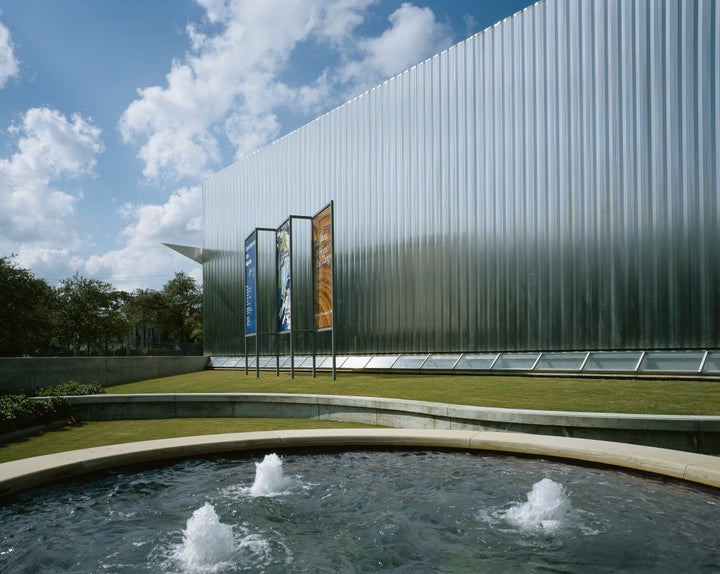
The museum has experienced damage as a result of natural disaster in the past; a 1976 storm left nine feet of flooding in the museum’s lower level.
“Community support was immediate, as was the NEA emergency fund grant,” Brungardt said. “A fund drive for flood relief was held in 1977 to assist with damages and to upgrade our facilities for flood control, including adding a concrete water barrier at the top of one of our loading ramps and gas powered pumps to pull the water out.”
In 2001, Tropical Storm Allison similarly left three feet of water in the museum’s lower level. The facility was able to recover thanks to community support and emergency grants. In the storm’s aftermath, the museum invested in movable water barriers for targeted flood control.
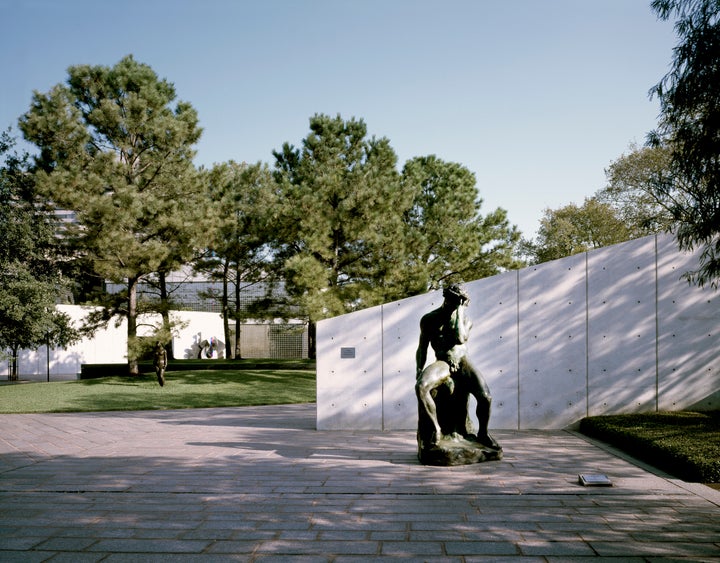
The Museum of Fine Arts, Houston
The Museum of Fine Arts, Houston underwent a similar protocol for storm protection. “Our hurricane-preparedness team implemented all of our storm-planning measures to secure the buildings,” Mary Haus, the head of marketing and communications at the museum said.
“These are protocols we have long had in place, including sandbags, stationing emergency water pumps, floodgate activation for the buildings and the stationing of a 24/7 emergency team on site at the main campus to monitor everything for the duration of the storm. That team includes engineers, art handlers, IT and other staff. As part of advance planning, works of art that were in a potentially vulnerable location, such as by a window or under a skylight, were moved as needed.”
To Haus’ knowledge, there has been no damage to any artworks in any of the collections as of yet. That, thankfully, includes a temporary exhibition by Swiss multimedia artist Pipilotti Rist, which viewers experience while resting on beds inside the museum space.
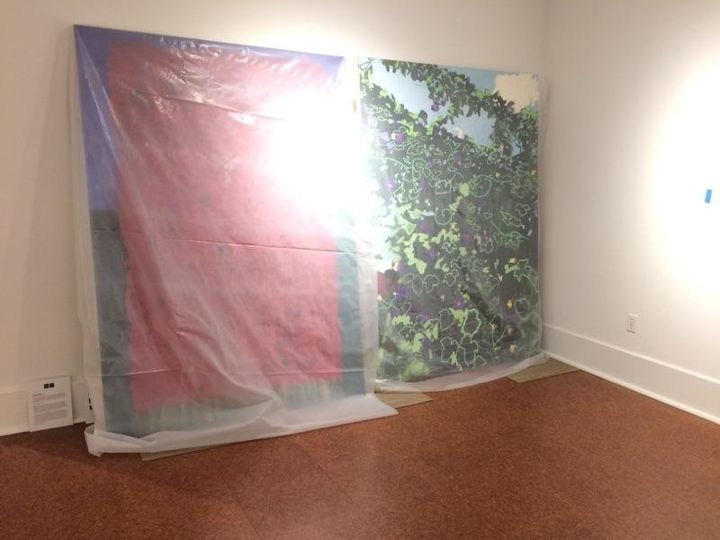
The Galveston Arts Center
The Galveston Arts Center, a space for contemporary art and educational programming located on the Gulf Coast, is also safe from major damage.
“We were preparing for an opening on Saturday, Aug. 26, featuring three Houston based artists ― Bradley Kerl, Angel Oloshove and Christopher Cascio,” Reese Darby, who does marketing for the center, wrote to HuffPost. “The decision had been made on Wednesday, Aug. 23, to start packing the art and moving it into storage upstairs.
“The building was originally a bank built in 1886, and we still retain three bank vaults which we use for storage. Items from ArtWorks, the museum store, were also stored in the vaults for safekeeping.”
At 131 years old, the GAC building has braced for floods in the past, including the 1900 Galveston hurricane, the deadliest natural disaster in U.S. history. And 2008′s Hurricane Ike, which brought around 13 feet of rain to the surrounding streets, left the GAC’s bottom floor ― and the Helen Altman exhibition displayed in it ― completely ruined. Subsequently, the space was renovated to better handle situations like Harvey.
“Bryan Garcia, our head of operations, and our current Board President Doug McClean also have systems in place to board up the windows and building, and secure and package exhibiting artworks, in case a hurricane touches down on the Island,” Darby said. “We are a small staff of five, plus our Board President, who are all dedicated to the the security, safety and future of our organization.”
As of Monday, Darby was happy to report the space was “high and dry.”
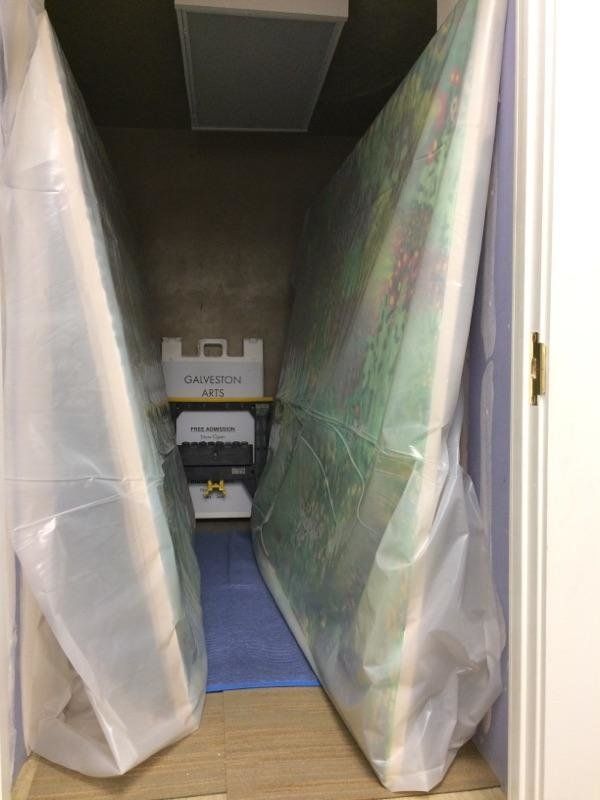
Project Row Houses, the Rothko Chapel and The Menil Collection
In emails to HuffPost, representatives from Project Row Houses, the Rothko Chapel and The Menil Collection all reported no damage resulting from the flood.
“Since Friday, the Menil has maintained an around-the-clock security and maintenance presence at the museum making regular checks on our basements in the main building and Menil Drawing Institute construction site, and on the skylights in the main building and at the Cy Twombly Gallery,” Tommy Napier, assistant director of communications at the Menil, explained.
“Periodic checks are being made at our other buildings, which include the Dan Flavin Installation at Richmond Hall and the Byzantine Fresco Chapel. We have done preventative sandbagging at buildings that require it. At this time, and thankfully, our buildings have not been impacted by the storm. Our director, conservation and registration departments, which include art handling services, are receiving regular updates about building status.”
The Menil is currently celebrating its 30th anniversary with the exhibition “Thirty Works for Thirty Years,” featuring a selection of standout works culled from the approximately 10,000 works in the permanent collection.
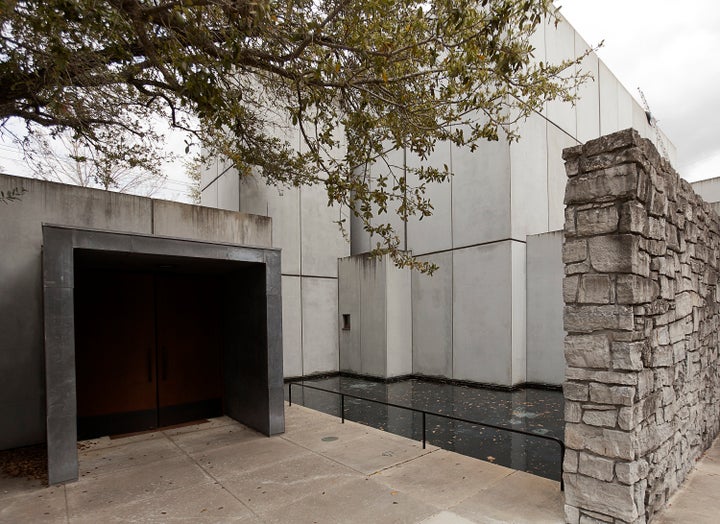
Rockport Center for the Arts
For the most part, museums throughout Houston were lucky enough to withstand major harm as a result of the storm. However, in a Facebook message, Luis Purón, the executive director of the Rockport Center for the Arts, located near Corpus Christi, shared it had suffered severe damage.
“From images I have been provided and third party accounts, it appears the building has sustained serious external damage,” Purón wrote. “One image demonstrates that the front porch is completely gone and a roof structure in the front of the building is exposed and thus compromised. It is entirely possible that additional damage to the roof exists, yet only an onsite inspection will reveal that. We are working on obtaining that information.”
The Rockport Center for the Arts is currently exhibiting an array of miniature paintings, drawings and found art assemblages by artist Tim Olson. The Center also offers art classes for children and families and hosts a variety of culturally-minded events throughout the year.
“The building is still standing as it has since 1983 a few feet from Aransas Bay,” Purón continued. “It remains unclear if all the sculptures in the Sculpture Garden collection survived the 130 miles-per-hour winds of Harvey’s category 4 direct impact to Rockport. We won’t know about internal damage until we are able to re-enter and inspect the building. The timeline for that is uncertain.”
Representatives for the Rockport Center have yet to respond to HuffPost’s request for comment.
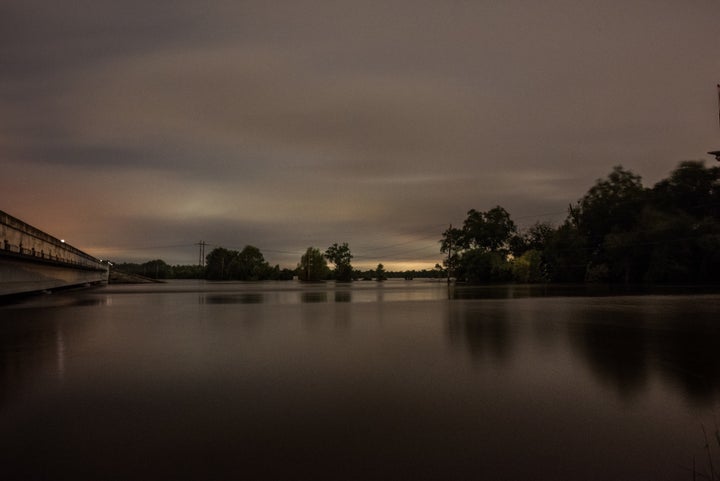
The arts institutions in contact with HuffPost all emphasized the supreme safety of their staff and community during this harrowing natural disaster. Many also expressed their hope that, after the flooding lets up, the museums and art centers can provide spaces for reflection, comfort and healing following the trauma of the storm.
As Alison Pruitt, director of operations at the Rothko Chapel, said, “The Chapel will reopen its doors as soon as it is safe for our staff and visitors, so that those in need of solace can gather and come together during the road to recovery ahead.”

